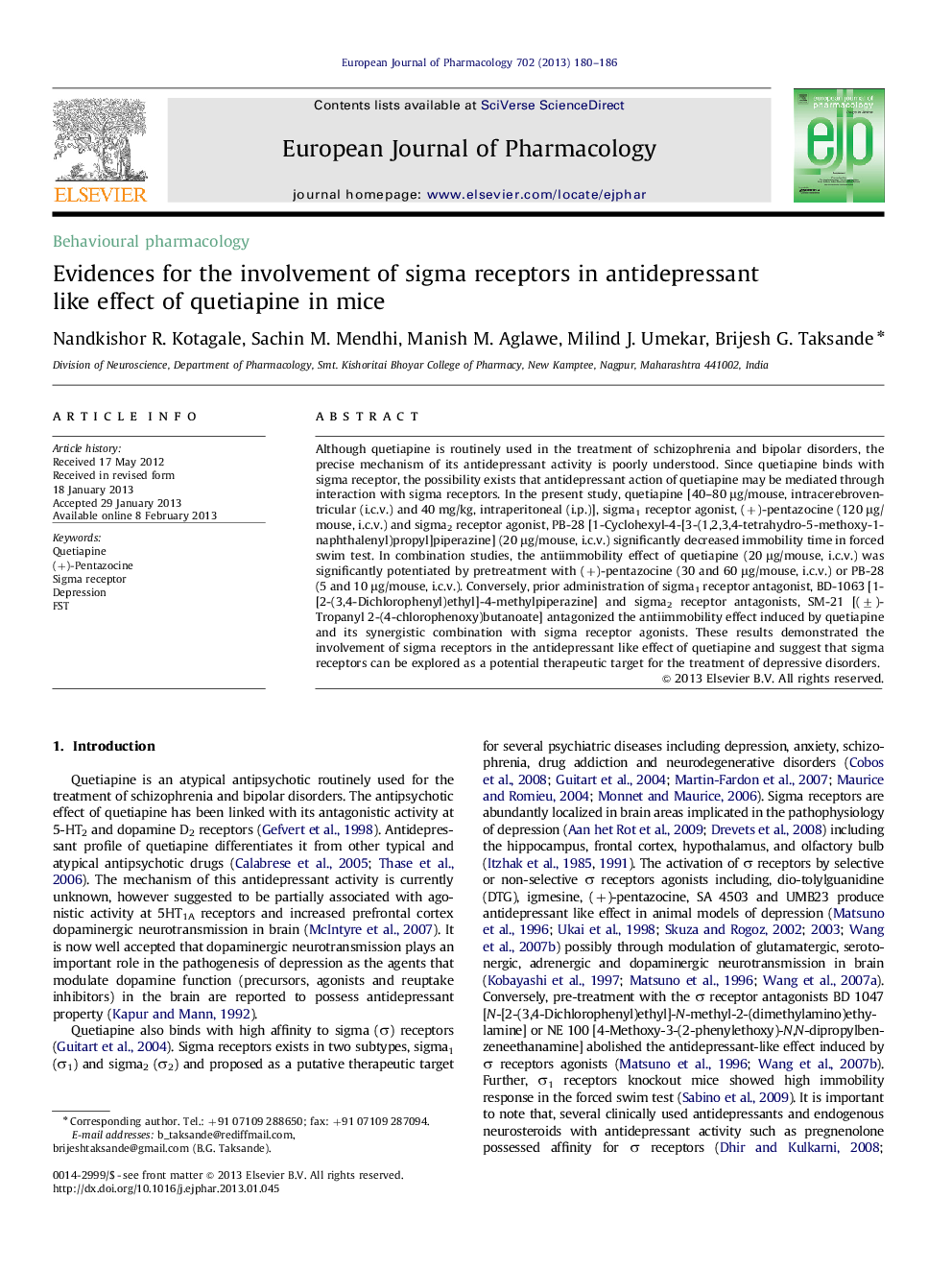| Article ID | Journal | Published Year | Pages | File Type |
|---|---|---|---|---|
| 5828695 | European Journal of Pharmacology | 2013 | 7 Pages |
Abstract
Although quetiapine is routinely used in the treatment of schizophrenia and bipolar disorders, the precise mechanism of its antidepressant activity is poorly understood. Since quetiapine binds with sigma receptor, the possibility exists that antidepressant action of quetiapine may be mediated through interaction with sigma receptors. In the present study, quetiapine [40-80 μg/mouse, intracerebroventricular (i.c.v.) and 40 mg/kg, intraperitoneal (i.p.)], sigma1 receptor agonist, (+)-pentazocine (120 μg/mouse, i.c.v.) and sigma2 receptor agonist, PB-28 [1-Cyclohexyl-4-[3-(1,2,3,4-tetrahydro-5-methoxy-1-naphthalenyl)propyl]piperazine] (20 μg/mouse, i.c.v.) significantly decreased immobility time in forced swim test. In combination studies, the antiimmobility effect of quetiapine (20 μg/mouse, i.c.v.) was significantly potentiated by pretreatment with (+)-pentazocine (30 and 60 μg/mouse, i.c.v.) or PB-28 (5 and 10 μg/mouse, i.c.v.). Conversely, prior administration of sigma1 receptor antagonist, BD-1063 [1-[2-(3,4-Dichlorophenyl)ethyl]-4-methylpiperazine] and sigma2 receptor antagonists, SM-21 [(±)-Tropanyl 2-(4-chlorophenoxy)butanoate] antagonized the antiimmobility effect induced by quetiapine and its synergistic combination with sigma receptor agonists. These results demonstrated the involvement of sigma receptors in the antidepressant like effect of quetiapine and suggest that sigma receptors can be explored as a potential therapeutic target for the treatment of depressive disorders.
Related Topics
Life Sciences
Neuroscience
Cellular and Molecular Neuroscience
Authors
Nandkishor R. Kotagale, Sachin M. Mendhi, Manish M. Aglawe, Milind J. Umekar, Brijesh G. Taksande,
